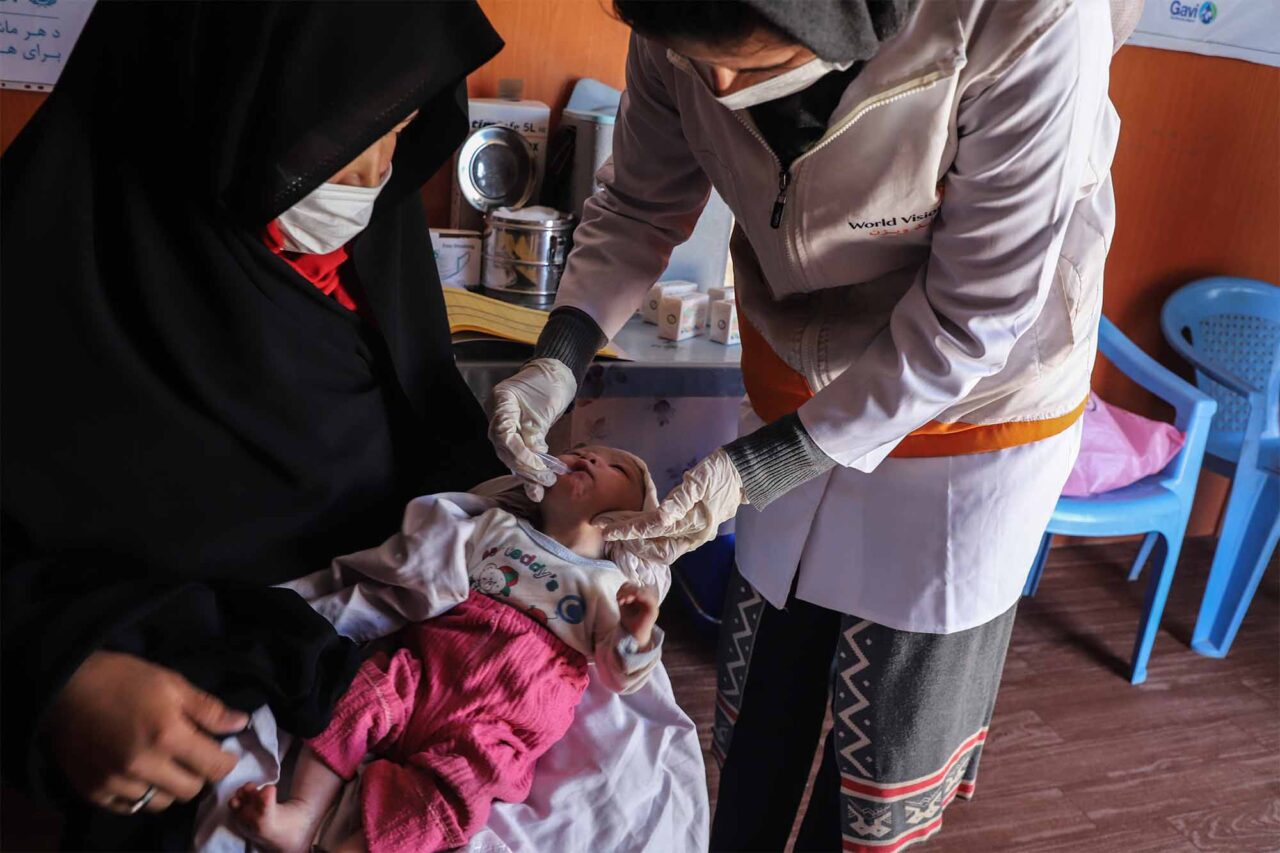Afghan children’s lives at risk; international community must intervene, says World Vision
Media Contact :
August 11, 2022
Senior Public Relations Manager
[email protected]
m 404-735-0871
Media Contact :
August 11, 2022
Senior Public Relations Manager
[email protected]
m 404-735-0871

KABUL (August 12, 2022) — International aid organization World Vision warned today that Afghanistan’s children are at risk of starvation, forced marriage and child labor unless the international community responds immediately.
Their new report, “Afghanistan: A Children’s Crisis,” surveyed over 800 parents, caregivers and children to see how their lives had changed in the year since the country’s political transition.
In surveyed areas, the mean income per household is less than a dollar a day (USD $0.95) and over half (53%) of the households surveyed have a child who is acutely malnourished.
“Parents and caregivers are facing devastating situations,” said Asuntha Charles, World Vision’s national director for Afghanistan. “Their children are starving, so they’re left with no choice. They must either send their children to work or arrange child marriage to ensure their survival. This is a choice no parent should ever be forced to make.”
To help support their families, 7 of 10 boys and over half of girls in surveyed areas were working rather than attending school; 57% of caregivers reported that their children have missed school.
“Children are experiencing significant mental health issues as a result of recent changes; 66% of the parents we spoke to shared that a child in their care had demonstrated signs of psychosocial distress,” said Charles.
The report observes that Afghanistan’s public health system is in crisis, with the contraction of maternal, newborn and child health services and the reduction of trained personnel rolling back years of progress. This has created significant risk for women and children, with 64% of babies delivered at home and less than a third of births attended by a skilled professional.
The NGO warns that this is very likely to contribute to a rise in infant and maternal mortality, noting that while governments and decision makers around the world have prioritized other emergencies, the children of Afghanistan have been forgotten. Although economic sanctions on the country have a clear exception for humanitarian aid, not all governments are funding this important work, putting too many Afghan children at risk of early death.
This humanitarian crisis, referred to by the U.N. as one of the world’s worst, is being exacerbated by volatile political, economic and climate events. World Vision urgently calls on the international community to support Afghanistan’s people in protecting the country’s children.
To read the report, please visit https://www.wvi.org/publications/afghanistan/afghanistan-childrens-crisis
About World Vision:
World Vision is a Christian humanitarian organization conducting relief, development, and advocacy activities in its work with children, families, and their communities in nearly 100 countries to help them reach their full potential by tackling the causes of poverty and injustice. World Vision serves all people regardless of religion, race, ethnicity, or gender. For more information, please visit www.WorldVision.org/media-center/ or on Twitter @WorldVisionUSA.
Notes to Editor
World Vision began emergency relief operations in Afghanistan in 2001, addressing humanitarian needs of children and their families affected by conflict and natural disaster. Over 20 years later, World Vision continues to partner with Afghan communities to provide humanitarian response alongside early recovery, resilience and development initiatives in the western provinces of Herat, Ghor, Badghis and Faryab. World Vision programming in the country prioritizes maternal and child health, nutrition, water and sanitation, food security and livelihoods, education, child protection and multipurpose cash programming. World Vision works holistically, in collaboration with communities, to meet basic needs and promote recovery, resilience and community development.
“Afghanistan: A Children’s Crisis” provides an analysis of recent data on the humanitarian situation in Afghanistan and combines it with new primary research from four provinces – Herat, Ghor, Faryab and Badghis – along with the testimonies of children and their families, who describe, in their own words, how the worsening situation in Afghanistan is impacting them.
Representatives of World Vision in Afghanistan are available for interview. For further information or to arrange an interview, please contact Nicole Harris at [email protected].